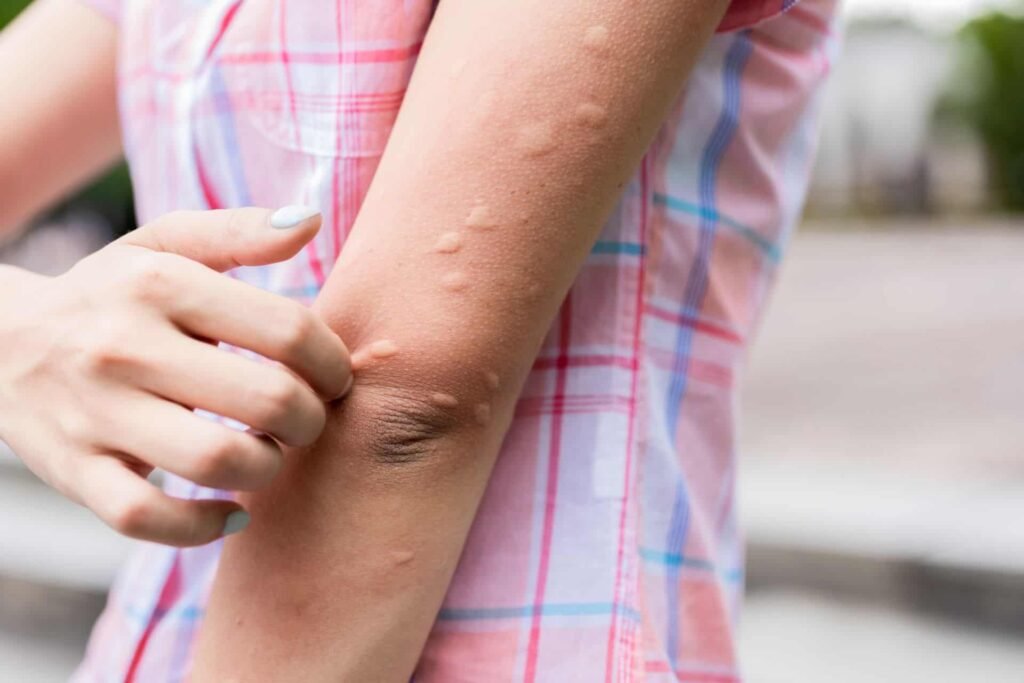
Hives is a skin reaction characterized by the appearance of red or white bumps accompanied by intense itching. It is a common condition that can appear suddenly and last from a few hours to several weeks. Depending on its duration, it is divided into acute and chronic forms.
Causes and Triggers Hives are caused when the body releases histamine and other chemicals, which lead to inflammation and swelling of the skin. The most common causes include:
- Allergic reactions: To foods, medications, insect bites or pollen.
- Infections: Viral or bacterial infections can trigger hives.
- Stress and emotional factors: Stress can worsen or trigger flare-ups.
- Physical factors: Exposure to cold, heat, pressure on the skin, or sunlight.
- Autoimmune diseases: In some cases, urticaria is associated with autoimmune disorders.
- Idiopathic urticaria
Symptoms and Treatment Hives appear as rashes that may change shape and size, accompanied by itching and swelling. In severe cases, it may be accompanied by angioedema, i.e. swelling of the lips, eyelids or tongue, which requires immediate medical attention.
Treatment depends on the cause and severity of the condition:
- Antihistamines: They help control itching and inflammation.
- Avoidance of irritants: Limiting allergens and irritants.
- Applying soothing products: Cold compresses and moisturizing creams relieve irritation.
- In severe cases: Administration of corticosteroids or immunomodulatory therapies may be required.
Living with Hives Hives can be annoying, but in most cases it is temporary and treatable. Early diagnosis and proper management of symptoms help maintain quality of life. If symptoms persist or are severe, consulting a dermatologist is essential to find the right treatment.




